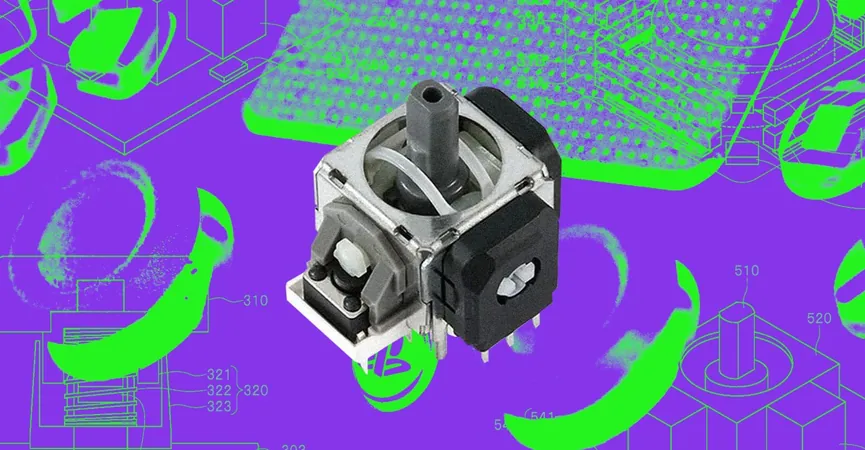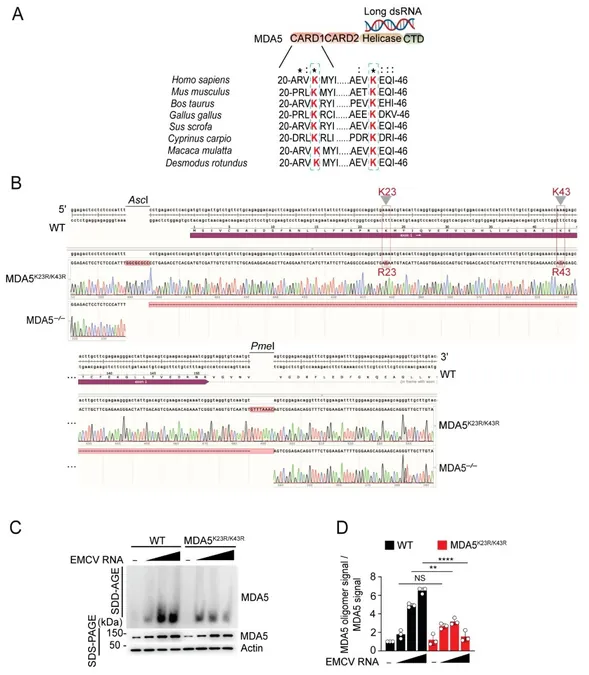
Say Goodbye to Joystick Drift: Quantum Mechanics Offers a Revolutionary Solution!
2025-04-06
Author: Sarah
Introduction
The Nintendo Switch has made waves in the gaming world for its portable design and innovative gameplay. However, it has also been notoriously associated with a problem that frustrates millions of gamers: joystick drift. This common issue arises when joysticks register inputs even when not being touched, leading to unintended movements in games—a dilemma not exclusive to Nintendo, as controllers from Sony, Microsoft, and even third-party manufacturers face similar hurdles.
The Traditional Approach to Joystick Design
To combat this vexing problem, developers have explored various solutions, particularly focusing on sensor technology. Traditionally, controllers utilized potentiometers to detect movement, involving a mechanical wiper that slides along a resistive strip. Unfortunately, this leads to wear and deterioration over time, resulting in inaccurate measurements and drift. As noted by repair experts at iFixit, these components can also accumulate dust and grime, amplifying the drift issue.
Hall Effect Sensors: A Step Forward
Emerging as a potent alternative are Hall effect sensors, which eliminate the need for components to physically touch each other. Instead, they operate using magnetism, a breakthrough concept originally developed in the 19th century by Edwin Hall. The primary benefit lies in their non-contact nature, which significantly enhances durability and accuracy.
Tunneling Magnetoresistance: The Future of Joystick Technology
However, there is another player in the field that may hold the key to even better joystick performance: tunneling magnetoresistance (TMR). This technology, first highlighted by Nobel Prize-winning physicists Albert Fert and Peter Grünberg in their discovery of the giant magnetoresistance effect in 1988, offers a more advanced method of detecting changes in resistance based on magnetic fields.
TMR sensors consist of ultra-thin insulating layers positioned between magnetic materials. By utilizing the quantum mechanical phenomenon of quantum tunneling, electrons can traverse barriers that should be impenetrable, thereby leading to greater sensitivity and a more reliable response to joystick movements. Unlike Hall effect sensors, TMR technology can operate at lower power levels, consuming only 0.1mA to 0.3mA, which is significantly less than its counterparts.
Market Adoption and Future Trends
Despite the impressive capabilities of TMR sensors, their adoption in mainstream gaming consoles like those from Nintendo, Sony, and Microsoft has been slow due to higher production costs. Nevertheless, several third-party manufacturers are already integrating TMR joysticks into their gamepads, showcasing models such as PB Tails’ Crush controller and GameSir’s Tarantula Pro.
Looking forward, it is noteworthy that companies like GuliKit are spearheading the introduction of TMR upgrade kits designed for popular consoles, giving gamers an immediate solution to joystick drift. They aim to provide these kits to PlayStation and Xbox users in 2024, paving the way for a new era in joystick technology.
Conclusion
While widespread implementation of TMR technology may still be years away, the reduction in operational costs as the technology matures indicates a bright future for gaming hardware. As gamers eagerly await these advancements, one thing is clear: the days of joystick drift will soon be behind us, making way for a seamless and immersive gaming experience powered by the wonders of quantum mechanics.



 Brasil (PT)
Brasil (PT)
 Canada (EN)
Canada (EN)
 Chile (ES)
Chile (ES)
 Česko (CS)
Česko (CS)
 대한민국 (KO)
대한민국 (KO)
 España (ES)
España (ES)
 France (FR)
France (FR)
 Hong Kong (EN)
Hong Kong (EN)
 Italia (IT)
Italia (IT)
 日本 (JA)
日本 (JA)
 Magyarország (HU)
Magyarország (HU)
 Norge (NO)
Norge (NO)
 Polska (PL)
Polska (PL)
 Schweiz (DE)
Schweiz (DE)
 Singapore (EN)
Singapore (EN)
 Sverige (SV)
Sverige (SV)
 Suomi (FI)
Suomi (FI)
 Türkiye (TR)
Türkiye (TR)
 الإمارات العربية المتحدة (AR)
الإمارات العربية المتحدة (AR)